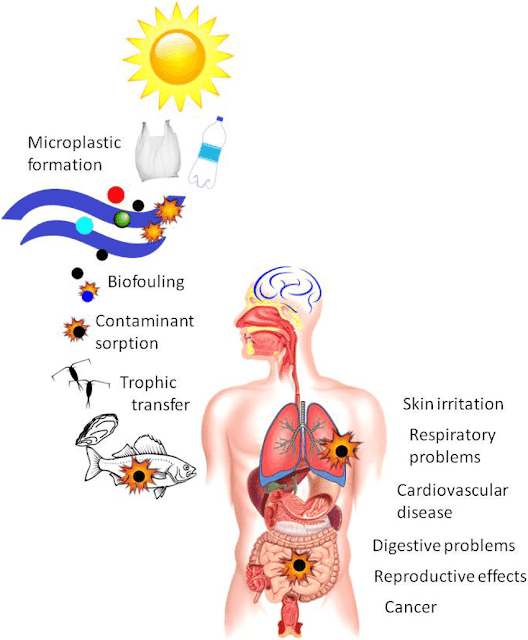Human health and covid-19(corona virus)
Identifying people who have been infected with COVID-19 and reaching those they may have infected will require 100,000 additional workers in US cities and states, according to a $3.6 billion plan released April 10.
“We need an army to do this,” says Anita Cicero, JD, deputy director of the Center for Health Security at the Johns Hopkins Bloomberg School of Public Health, and a lead author of “A National Plan to Enable
Comprehensive COVID-19 Case Finding and Contact Tracing in the U.S.” The plan was developed by the Center and the Association of State and Territorial Health Officials.
Contact tracing involves identifying people who are infected and then finding their recent contacts who may have been exposed. The goal is to interrupt the disease’s chain of transmission. { Human health and covid-19(corona virus }
A single person with COVID-19 can be expected to infect up to 2-3 people on average. This means, without other interventions, one infected individual could lead to nearly 60,000 cases after 10 rounds of infections.
Battered by budget cuts and job losses for the past 15 years, state and local public health agencies need the massive infusion of federal support for contact tracers, according to the plan.
In an exclusive Q&A with Global Health NOW, Cicero explains why the funds are needed and how the plan would supplement local and state agencies’ contact tracing efforts.
Tell us in broad brush strokes what this plan is about and why the US needs a national contact tracing plan.
Testing for COVID-19 is the linchpin to almost every solution. But testing only identifies who currently has the disease. We need to do contact tracing in order to find out who else might have been exposed and to quarantine them—or to isolate them if they actually are sick themselves.
Right now, local and state public health agencies across the United States do not have near enough people to be able to trace all these contacts of cases. Their budgets have been cut by something like 30% over the last 15 years. And since 2008, they lost about 50,000 jobs—a quarter of the workforce. So, we need an army to do this.
What challenges do you think the plan will face?
We should take care to respect the local communities' culture and sensitivities, and to think about equity issues and how best to implement these with vulnerable populations. Those things should not be footnotes, but really should be central in terms of how we implement these response measures.{Human health and covid-19(corona virus}
Can you give us an example of working with a vulnerable population in that way?
Micro plastic effect on human health
Who knew that “great” would be such an understatement. Since World War II, the production and use of plastics have increased exponentially and become part of everyday life. Plastics are found in food wrappings, beverage containers, toys, cars, and cosmetics. The ubiquitous presence of plastics in our lives makes them essentially unnoticed, unrecognized, and forgotten. And this is exactly why we all need to start thinking about them with more deliberate attention.
In 2015, it was estimated that 320 million metric tons of plastic was produced, yet much of it is intended for single use and then disposed rather than recycled or incinerated .
Problem of plastic pollution
The problem of plastic pollution and its enduring impact was dramatically brought to light with Charles Moore’s discovery of the Great Pacific Garbage Patch in 1997. The threat to marine life from our plastic pollution has been described in the popular media, including the New York Times, the recent BBC series Blue Planet 2, and Earth Day 2018 was dedicated to changing human attitudes and behavior about plastic . However, the threat of plastics to human health gets relatively little coverage in clinically focused medical journals.More recently, the discovery of micro plastics has raised concerns among scientists. Micro plastics (MPs) are defined as plastic pieces measuring < 5 mm, and although not as visible to the eye as discarded water bottles on a beach, MPs astoundingly “make up 94% of an estimated 1.8 trillion pieces of plastic in the patch” and have been found in all forms of marine life from zooplankton to whales .
It is important to understand that MP pollution is composed of primary and secondary micro plastics. Primary MPs enter the environment as manufactured components used in many common items such as cosmetics and personal care products. Secondary MPs enter the environment through fragmentation and degradation of larger plastic items from exposure to UV light, freezing, wind, wave action, and abrasion .Another important source of secondary MP pollution occurs from the breakdown of synthetic fibers and discharge into the environment through waste water from washing machines. The potential health problems from MPs can be thought of in the same way we think about silicosis or byssinosis from naturally occurring inorganic and organic particulates. Except the obvious difference with MPs is there is nothing natural about them.
Due to their small size and persistence, MPs have been found throughout our environment. They have been found in all forms of marine life; in table salt, honey, sugar, and beer; in organic fertilizers; in the dust in our homes; and most alarmingly, in bottled and tap water sample. The ubiquity of MPs creates problems to our ecosystem in several different ways.
What is the physical impact of MPs?
First, and most obviously, the physical impact of MPs creates devastating injuries to many forms of marine life from concretion of accumulated MPs (a.k.a. “plastic bezoars”) in gills and intestines, thus interfering with feeding habits that unnaturally lead to death. Second, plasticizers in MPs have been linked to abnormal growth and reproductive problems from endocrine disruption in multiple animal model. Third, studies have shown how organic pollutants like pesticides leach into organisms that ingest MPs. Fourth, a study this year described how MPs deliver dangerous metals like lead and cadmium to coastal ecosystems. It is postulated many of these toxic effects of MPs cause GI irritation, alteration of the microbiome, disturbance in energy and lipid metabolism, and oxidative stress. Bioaccumulation from these effects of MPs can have far reaching impact throughout the food web and alter our delicate ecosystem and contribute to a loss of biodiversity.The long-term impact of MPs on human health remains largely unknown since most studies to date have been limited to the impact on marine life consuming MPs directly. It is clear, however, that humans are exposed as these particles are found in our seafood and water supply, in the air we breathe, and in the dust in our home. How the damaging effects of MPs on marine, freshwater, and land ecosystems impact human health still needs to be discovered. Some important questions include the following:
- Do inhaled particles lodge in our airways?
- Are inhaled or ingested particles a chemical or physical irritant (or both)?
- Do inhaled or ingested particles serve as a stimulator of inflammation?
- How exactly do MPs deliver toxic chemicals, heavy metals, or other pollutants into the body?
- Do they alter metabolism or increase oxidative stress?
- Are there unique implications for developing fetuses or children?
The wide distribution of MP pollution throughout our environment, the ease with which we create more each day through our daily activities, and the varied way in which humans are exposed demand a better understanding of the impact of MP pollution on our health. As Rachel Carson wrote in Silent Spring, “If we are going to live so intimately with these chemicals--eating and drinking them, taking them into the very marrow of our bones--we had better know something about their nature and their power” . Although Carson was specifically writing about insecticides and pesticides, the implication for plastics in all of its forms is similar.
Currently, there are more questions than answers. The scientific community must lead this debate. As we have seen with lead and other chemical pollutants, the consequences can be far reaching, widespread, and enduring. As we have seen with the vaccine debate, the popularization of controversial, bad science can also be far reaching, widespread, and enduring. Medical toxicologists are uniquely qualified to address these questions and better inform the public and policymakers. The specialty of medical toxicology includes front line clinicians, cutting edge researchers, and policy leaders who work in clinics, hospitals, academic centers, and even at the CDC. As Beauchamp argued in a JMT commentary a few years ago, “toxicologists have an obligation to members of the public, health educators, policy makers…and healthcare professionals” to use their expertise to frame these debates . Now is the time. Will you think about it?




Comments
Post a Comment